14th May - 20th May
Partner Company: Bittersuite
Brief: Re-design the acoustic properties of a physical space
Group: Ula Rodakowska, Sebastian Ervi, Kate Chernysheva
Partner Company: Bittersuite
Brief: Re-design the acoustic properties of a physical space
Group: Ula Rodakowska, Sebastian Ervi, Kate Chernysheva
CHOOSING OUR MICRO SPACE
Our week started with deciding on the space which was a long and stressful process for me as we realised that we weren't on the same page as a group. After the presentation Sebastian shared some of his ideas with us about possible design outcomes we could have for the project. And while they were very interesting and I really liked some of the notions he explored, it made me feel like we aren't moving forward because we still didn't choose our space to work with.
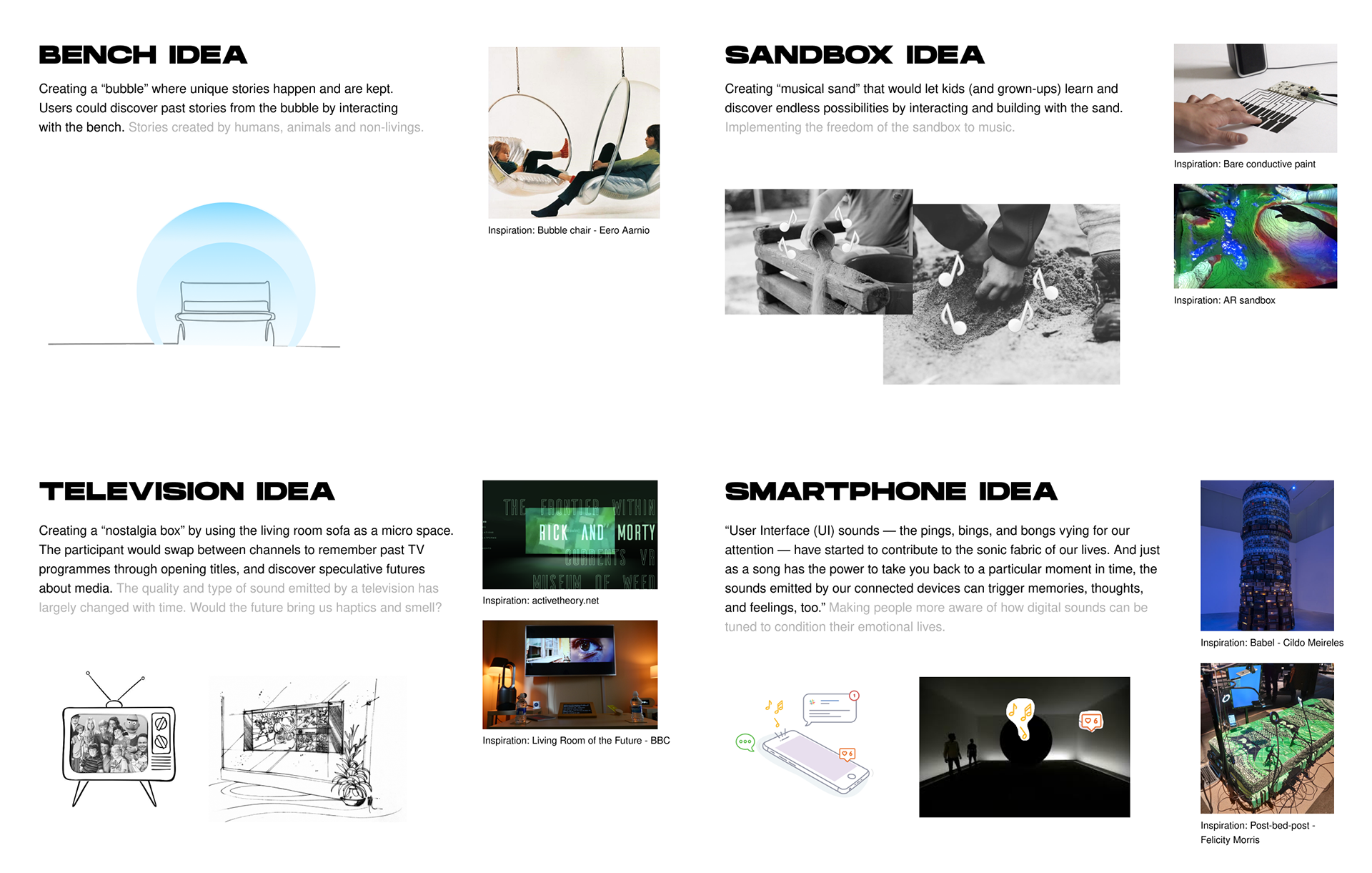
Ideas presented and illustrated by Sebastian.
At some point I stopped minding what that space would be just because I thought we should just choose one and then go with it till the end, start exploring and making things. Finally, after a very very very long discussion and analysis of our existing ideas and progress, we have decided, our new space is... *drumroll*... BENCH!
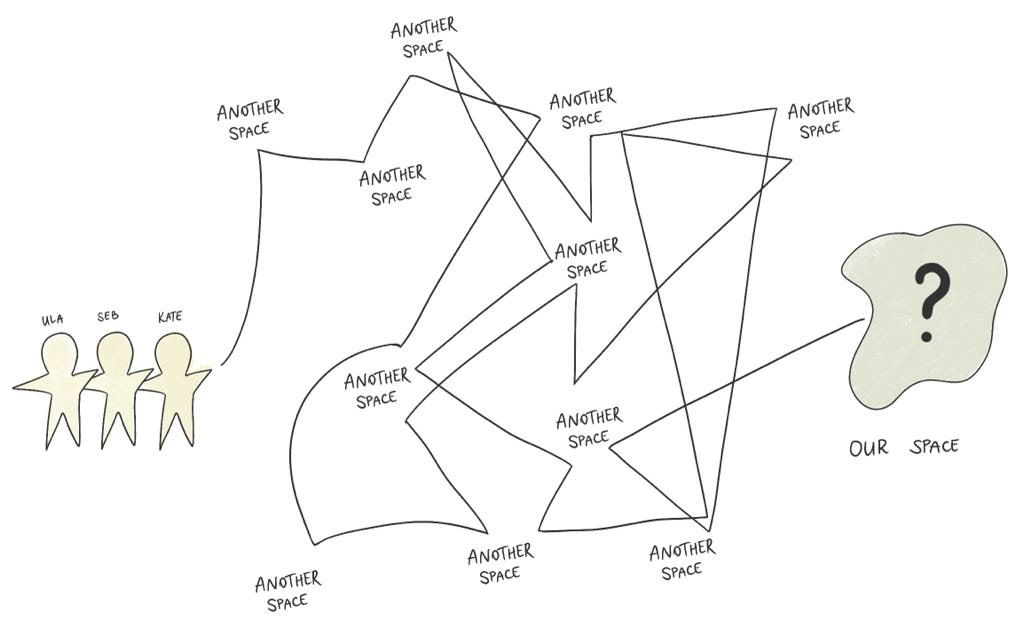
A representation of how we were trying to choose a space in the beginning of the week. Illustrated by Kate.
Workshop with Anna
Before we dived into the brainstorming, we met with Anna Pearce, who does the somatic practice and body work for all Bittersuite concerts. With her guidance, we completed a very interesting workshop where she guided us through a series of steps that felt very different in terms of how we perceived our bodies. For example, rolling your eyes in a different direction than your head turns to. Later on, she asked us to close our eyes and played us some music and asked us to draw what we saw. This was an amazing experience as I never realised how different some things might feel or be perceived in our bodies. I also discovered something interesting about myself. The music that was played contained a flute part and I found myself trying to take a breath every time before the flute started playing as I have been playing it myself my whole life which is a reflex.
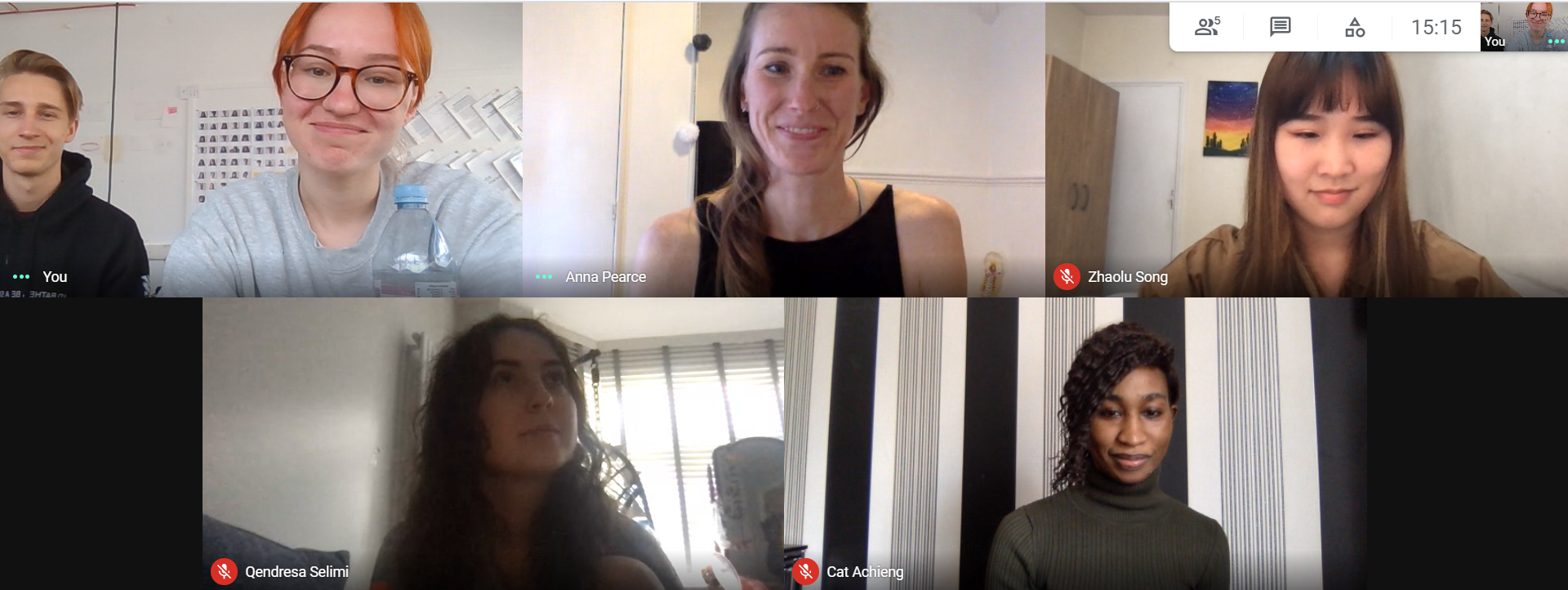
Our meeting with Anna. Screenshot taken by Kate.
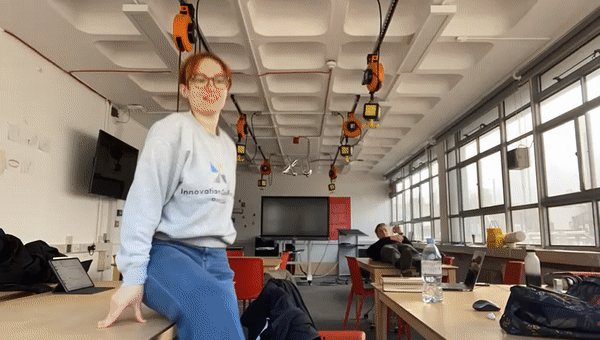
A time-lapse of us doing the experience with Anna. Taken and edited by Kate.
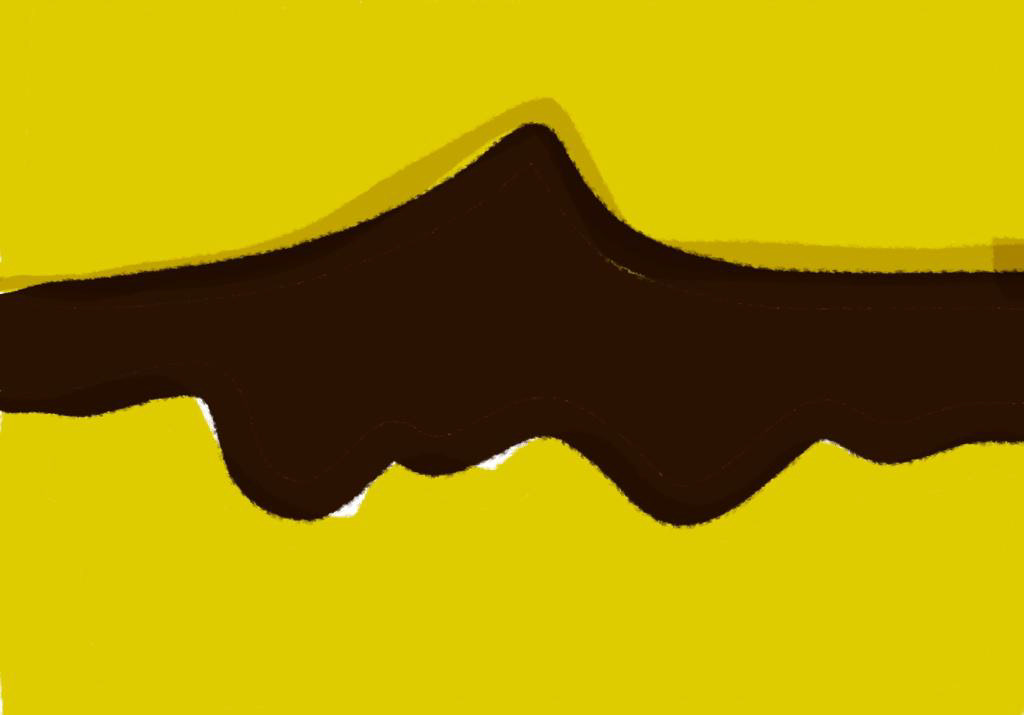

My drawing of what I saw while listening to music which is also something synesthetic, as I saw colour when listening to music. The first thing I said when sharing my feelings and thoughts was "This music is very yellow" because it really felt like it.
MICRO SPACE: BODY
After the experience, we sat down to think on how we want to go about a bench as our physical space. We wanted to do our own research and exploration, we purchased a recorder and borrowed GoPro from the university to do a detailed time-lapse and sound analysis of a bench. However, the weather was not on our side and we couldn't do anything as it was constantly raining and nobody would use a bench when it's raining. Therefore, we quickly switched tactics... and spaces too. We finally chose to focus on the acoustics of self. The clock was ticking and we needed to start acting.
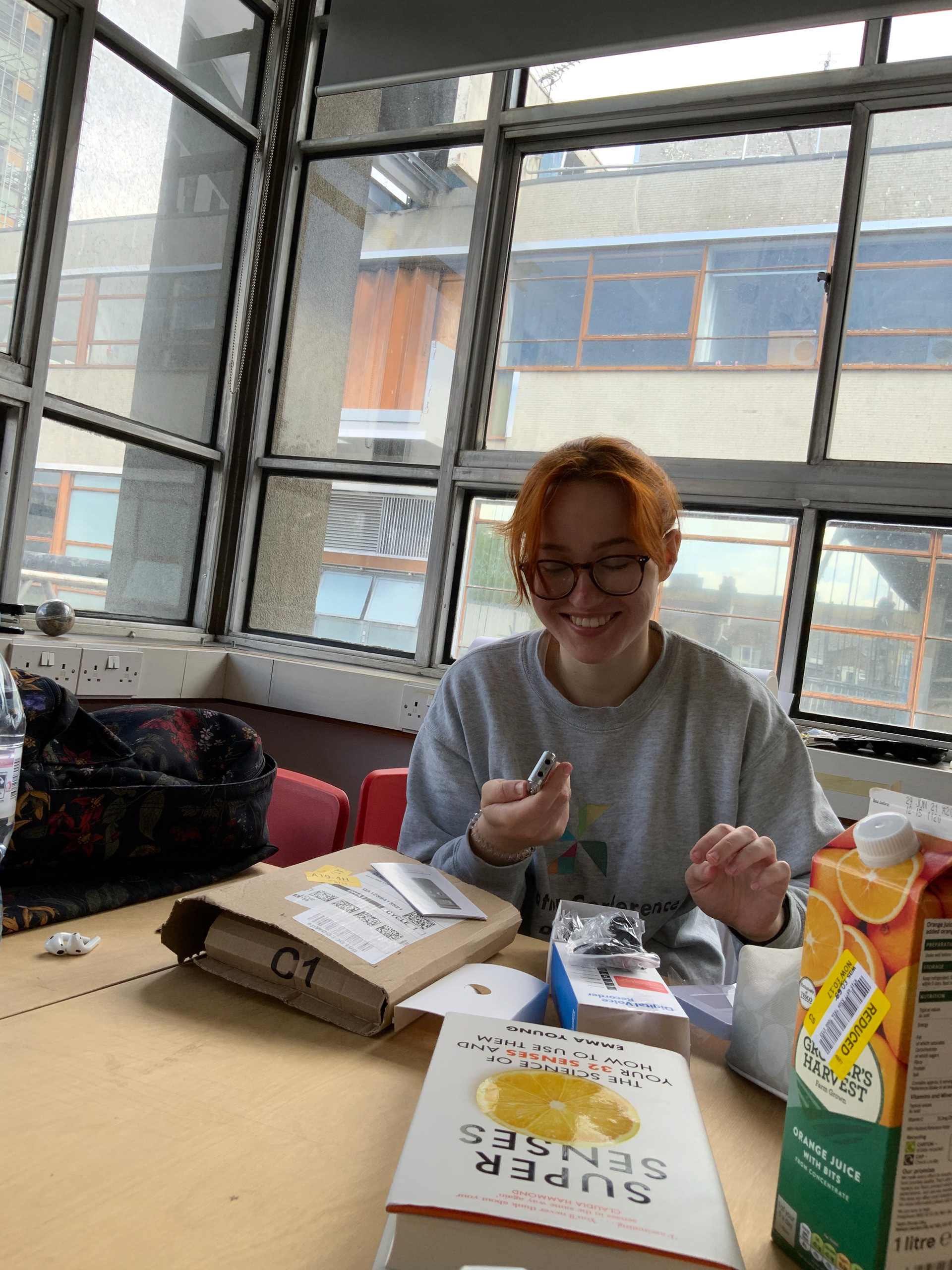
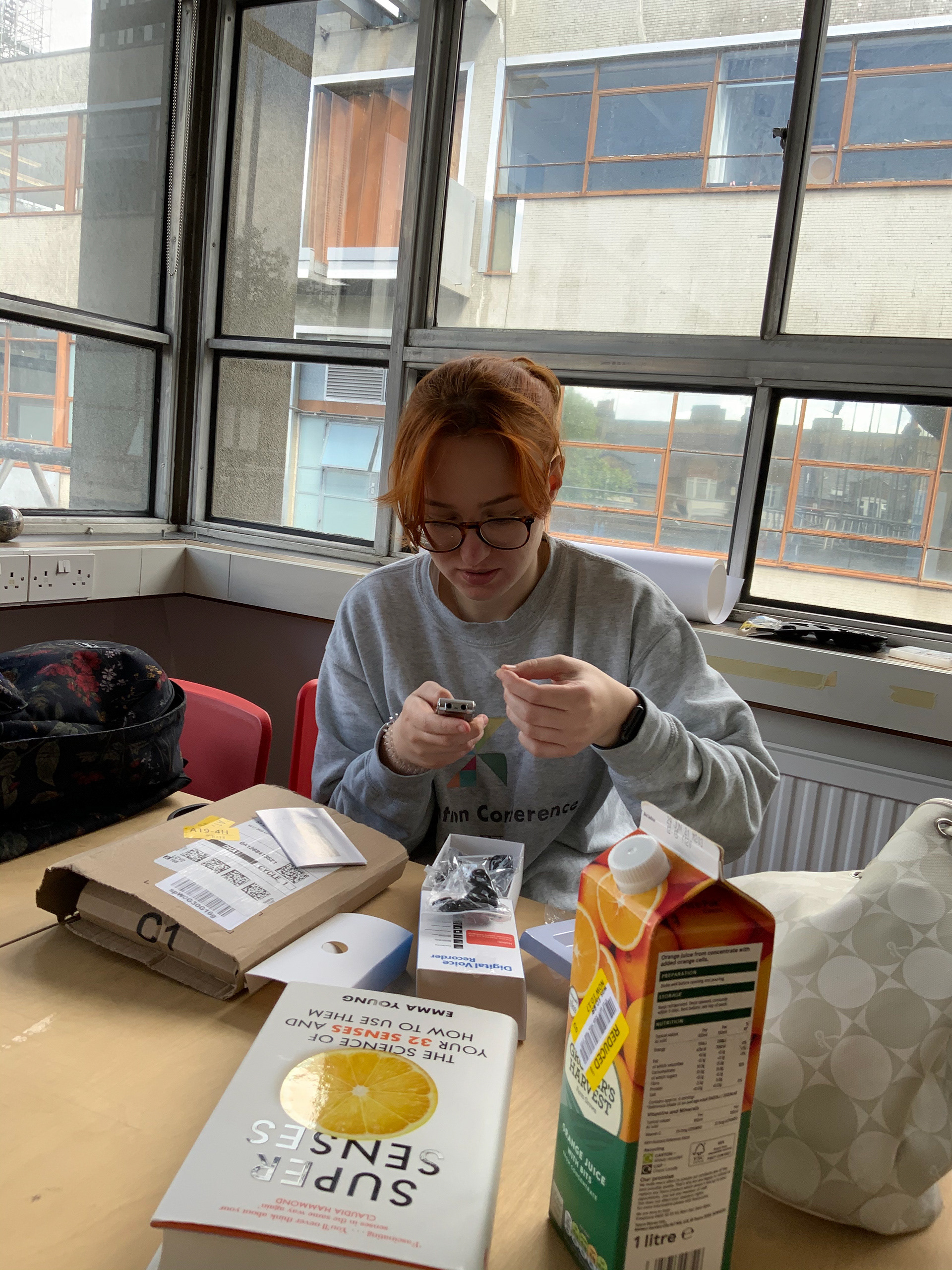
Unboxing and figuring out our new toy - the recorder. Photos by Ula.
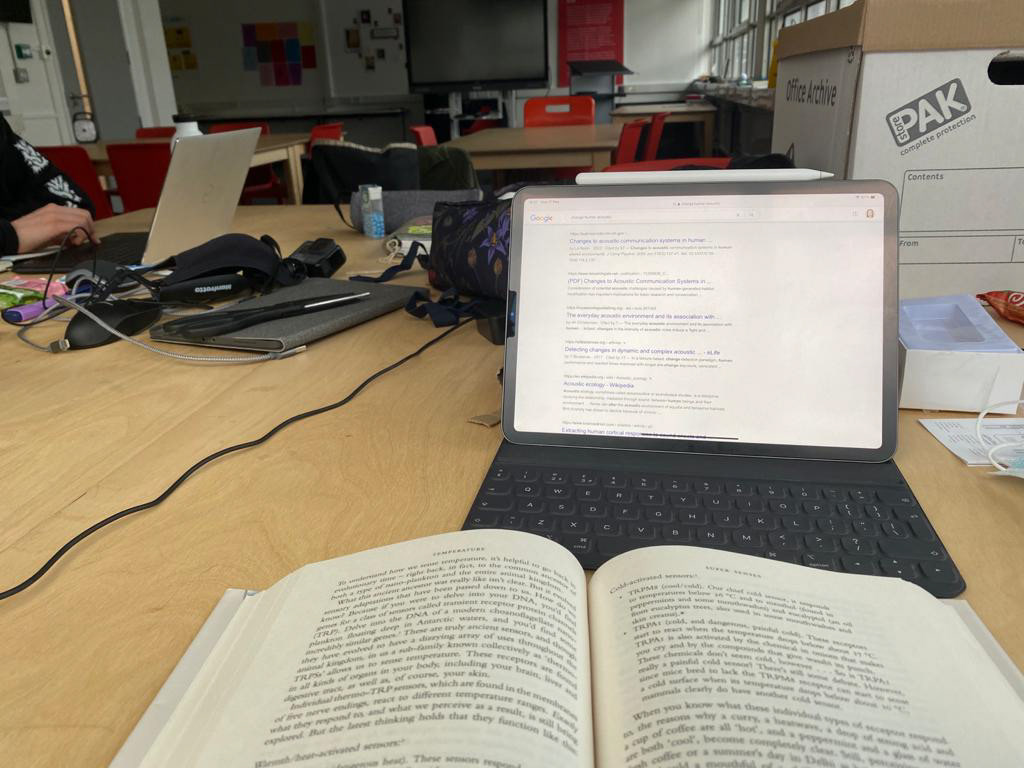
Acoustics of body research. Photo taken by Kate.
CRAZY EIGHT
First step was our favourite Crazy Eight method to see what is hidden in our imaginations. This was, as usual, very helpful and gave gave us some ideas and elements we could work with.
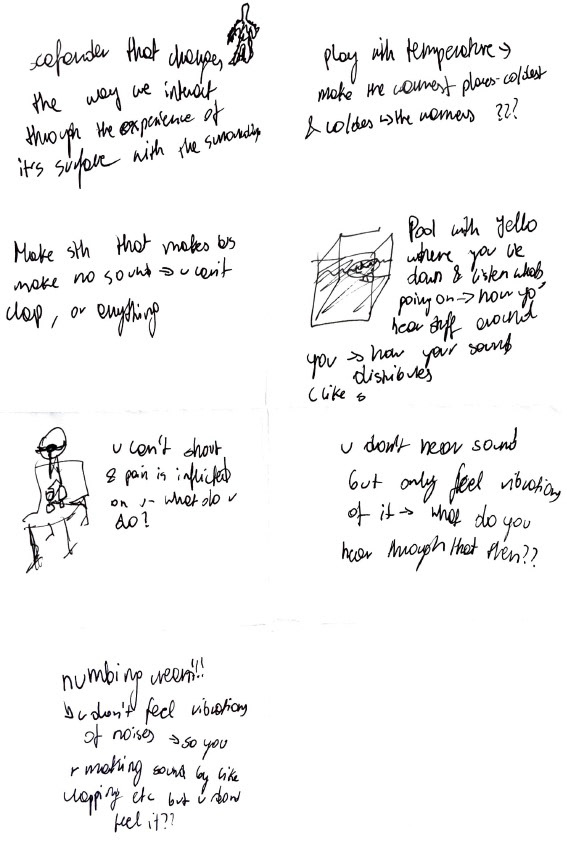
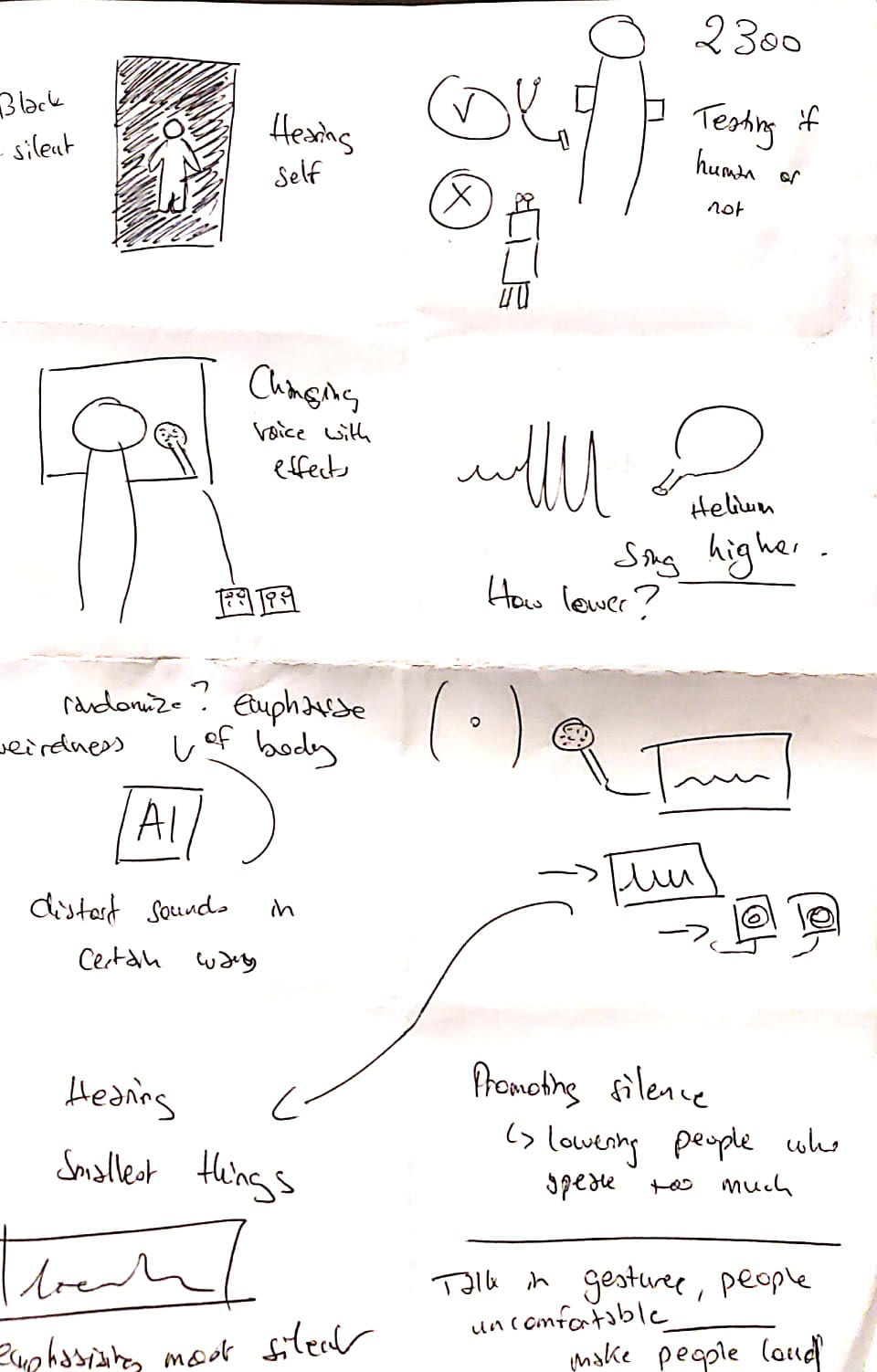

Crazy Eights ideas. Scans by Ula, Sebastian and Kate respectively.
experimenting
To get more ideas about sounds and our bodies, we decided to record ourselves while asleep. However, it only gave us a couple of 7-hour recordings of our breath and occasional movements which were a little bit disappointing as we were hoping to get some insights. Meanwhile Sebastian ordered a stethoscope which arrived just in time. We began experimenting and trying to listen to our body sounds by putting the chest-piece in different places such as head, cheeks, back, chest and tummy. The most prominent sound was heartbeat so we decided to try and record it with our new recorder. However, it wasn't working out whatever we tried so our next stop was CTL. They told us that to record the sound coming from a stethoscope we would need a contact microphone. Luckily we were able to get one from our new favourite place in LCC - Sound Arts kit room.
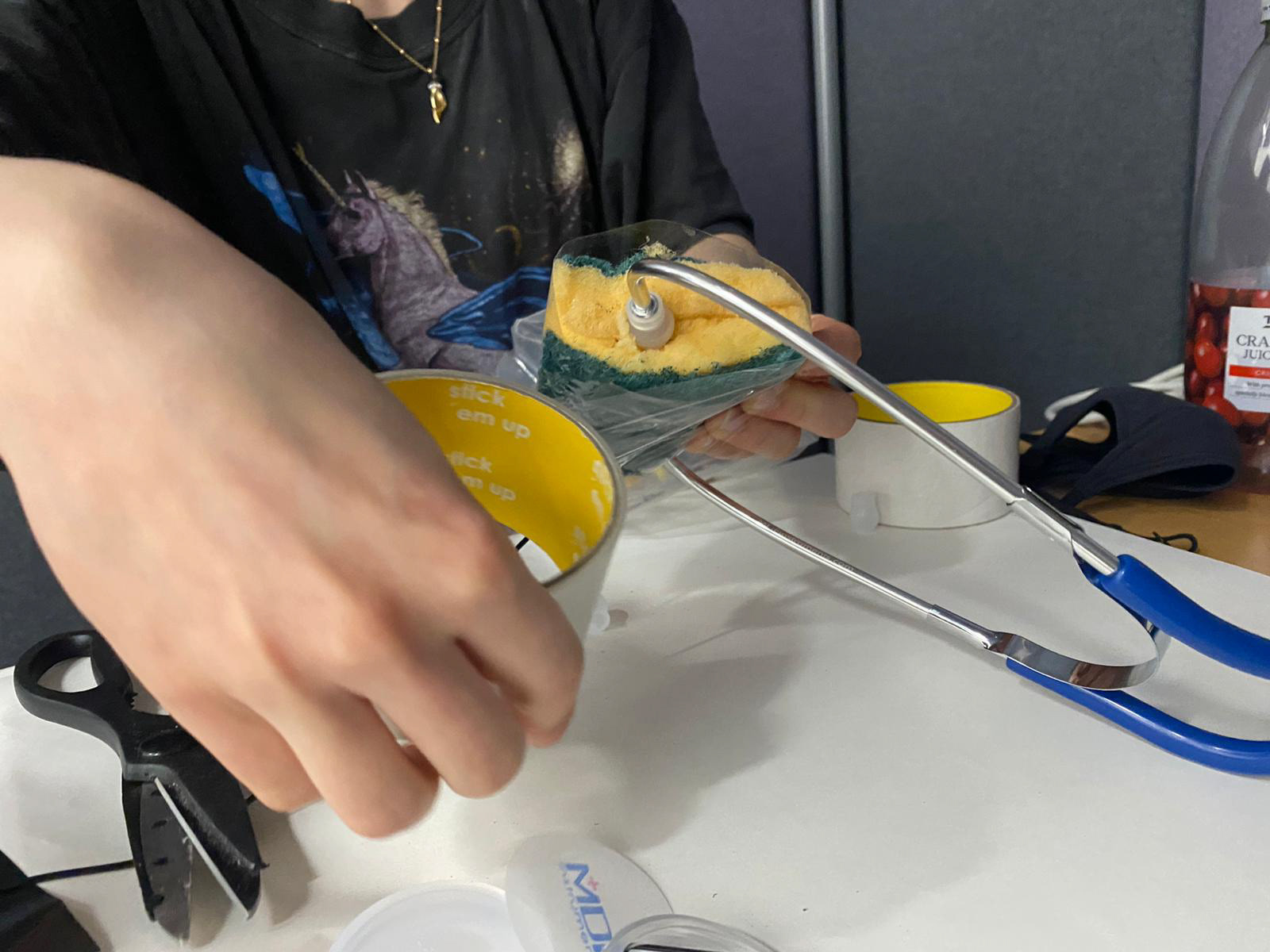
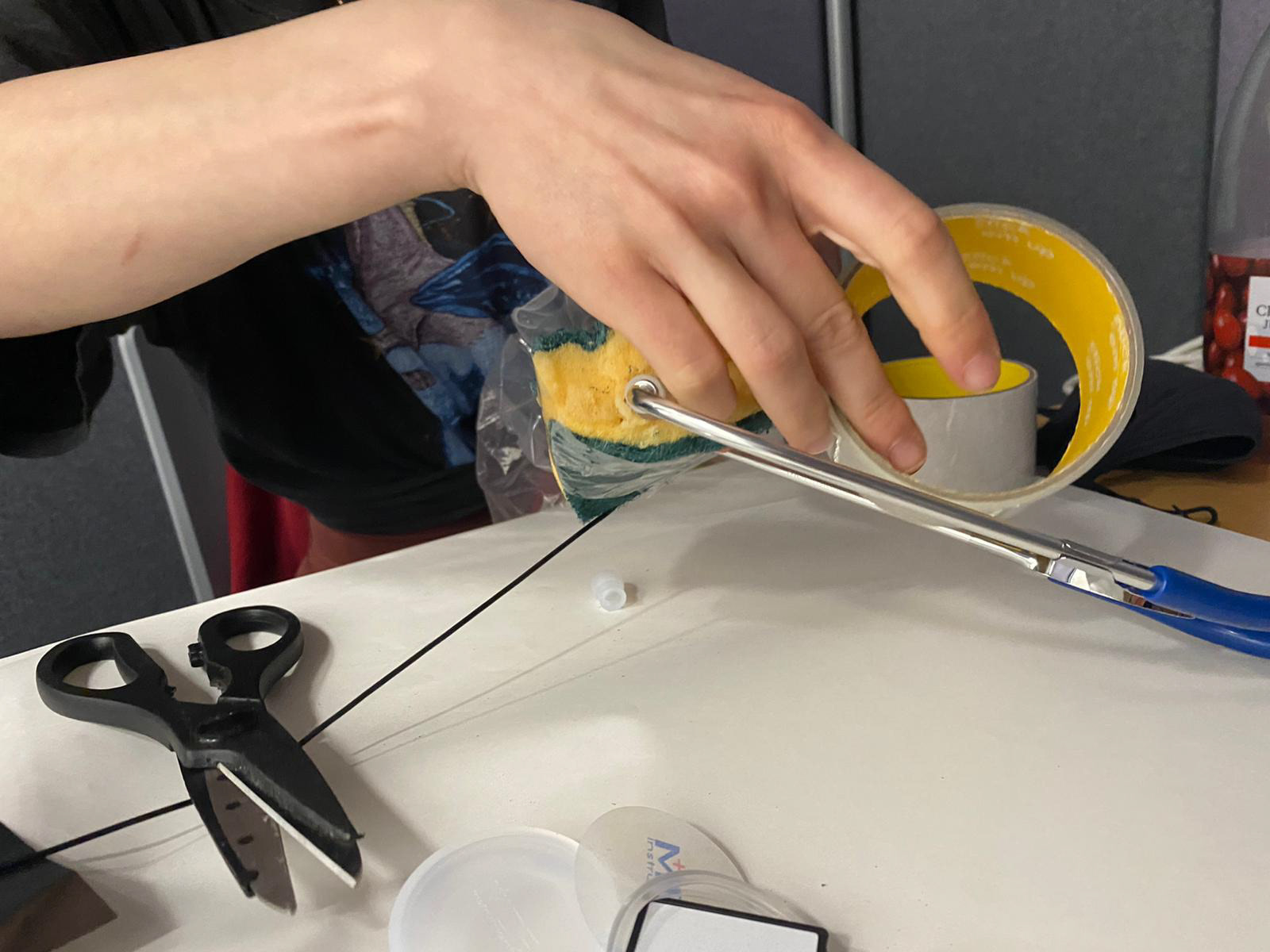
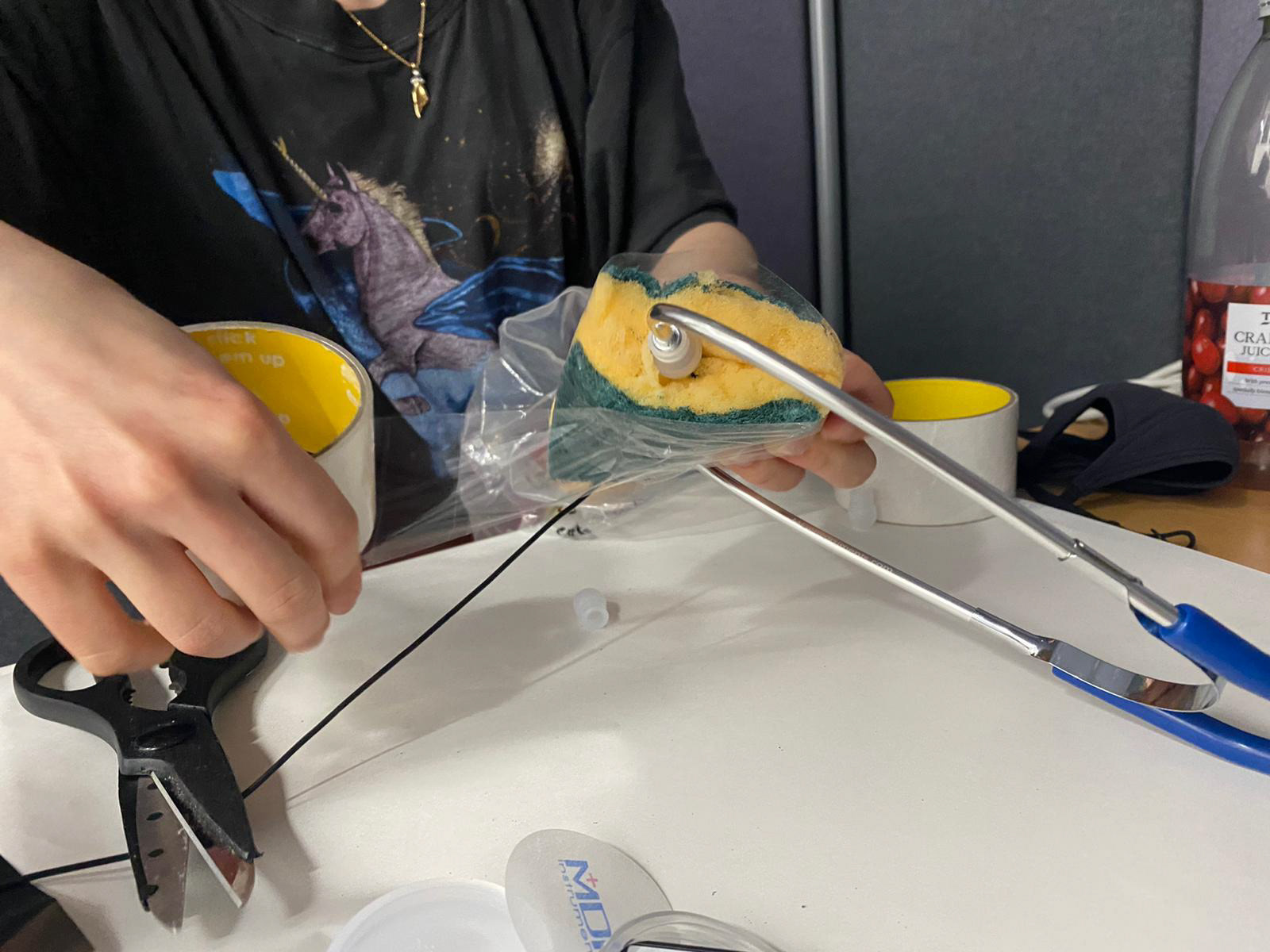
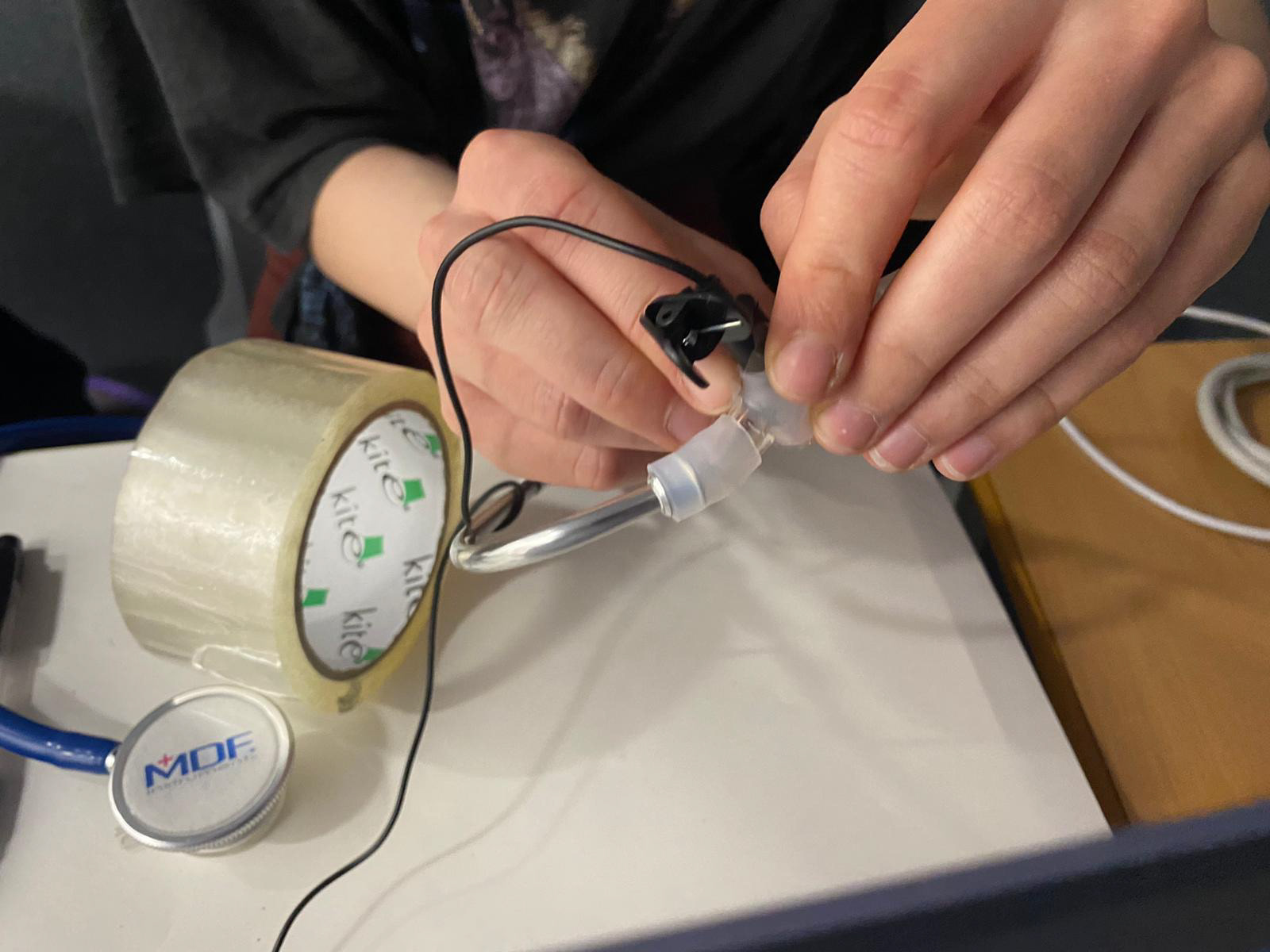
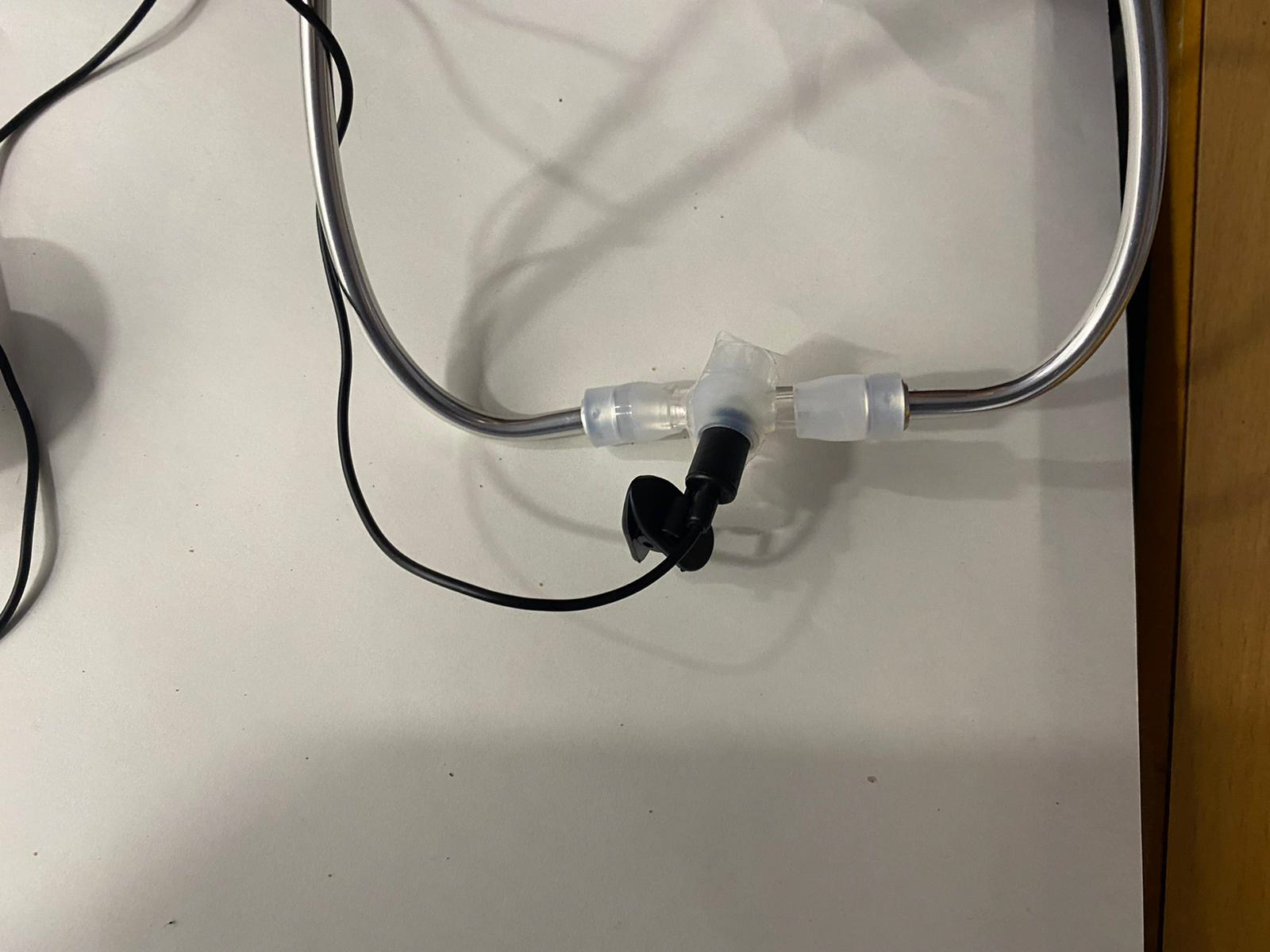
Attempting to attach a microphone to the stethoscope to record the heartbeat. Photos by Kate.
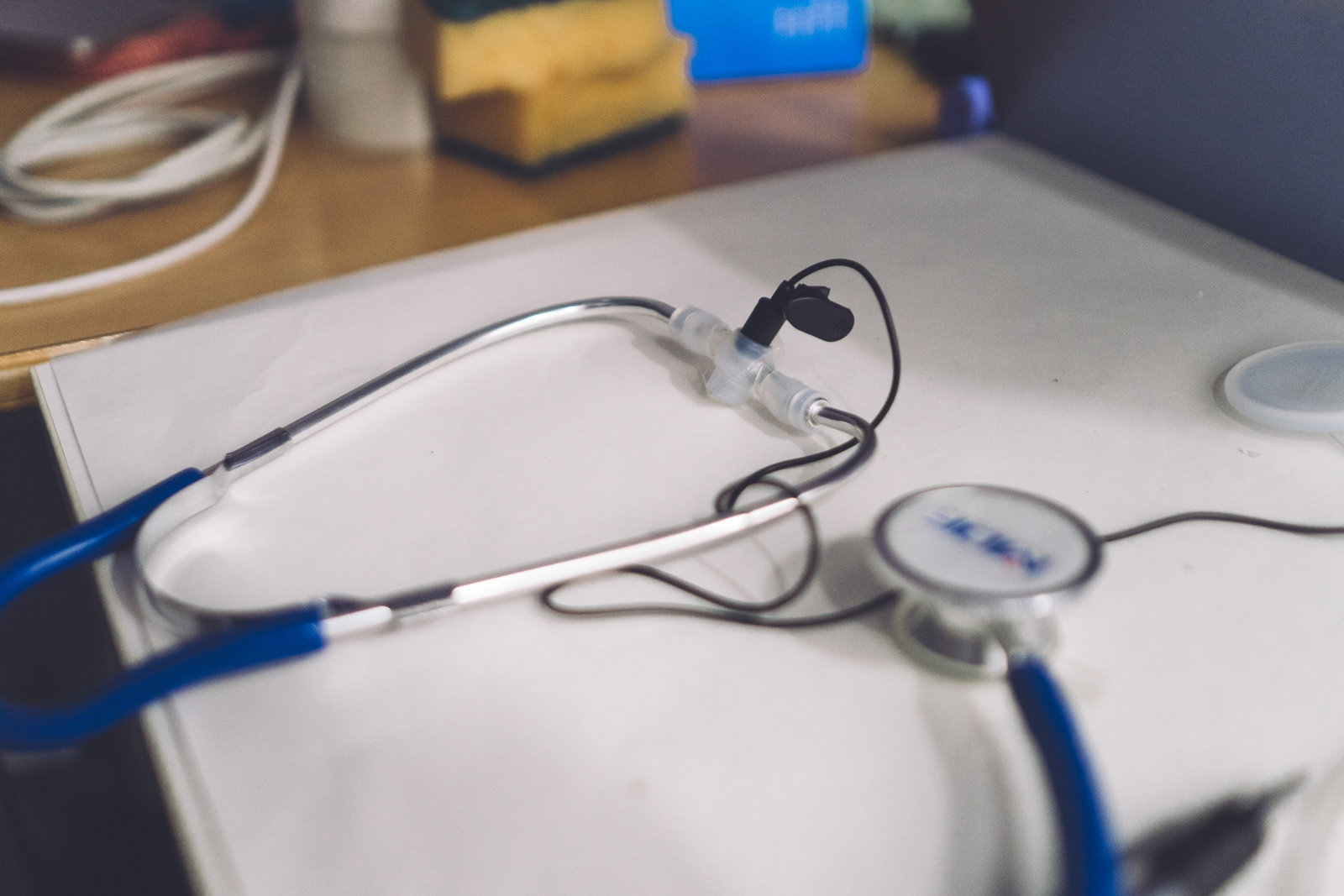
Trying to record a heartbeat with a stethoscope. Photo taken by Sebastian.
As soon as got it, we began experimenting. Surprisingly, the sound of a heart was so clear and it was fascinating to be able to hear it. Then, we remembered my idea about a bubble from before, where each person gets a bubble and is able to hear sounds inside and decided to combine it with a heartbeat. We thought of creating an intimate sonic atmosphere between people to show that there is more than facial expressions and our voices. We wanted to create a space where people place their entire focus on sounds. Heartbeat is a very powerful communicator and is able to tell a lot about how people feel. That way we were changing how we hear others and yourself.
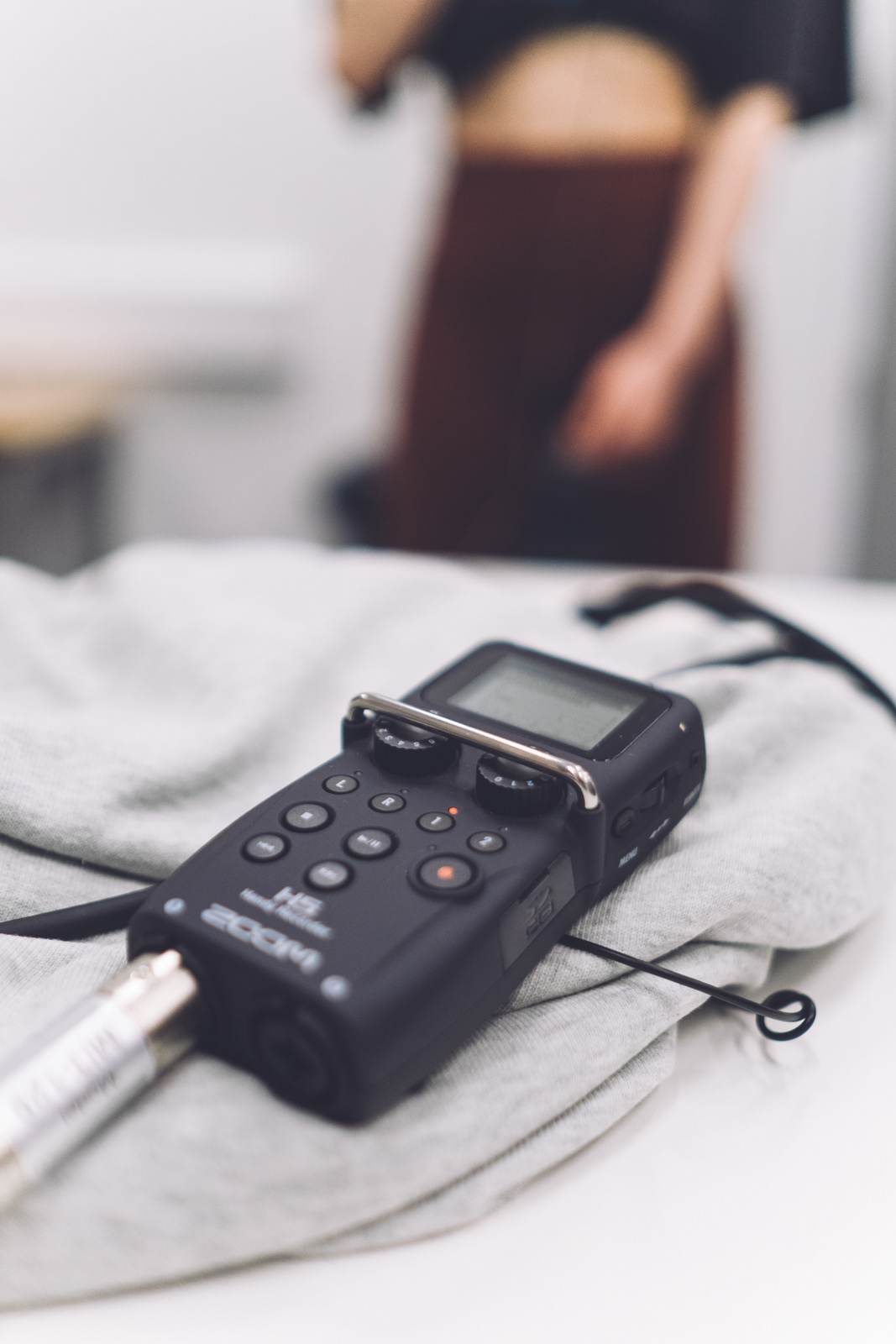
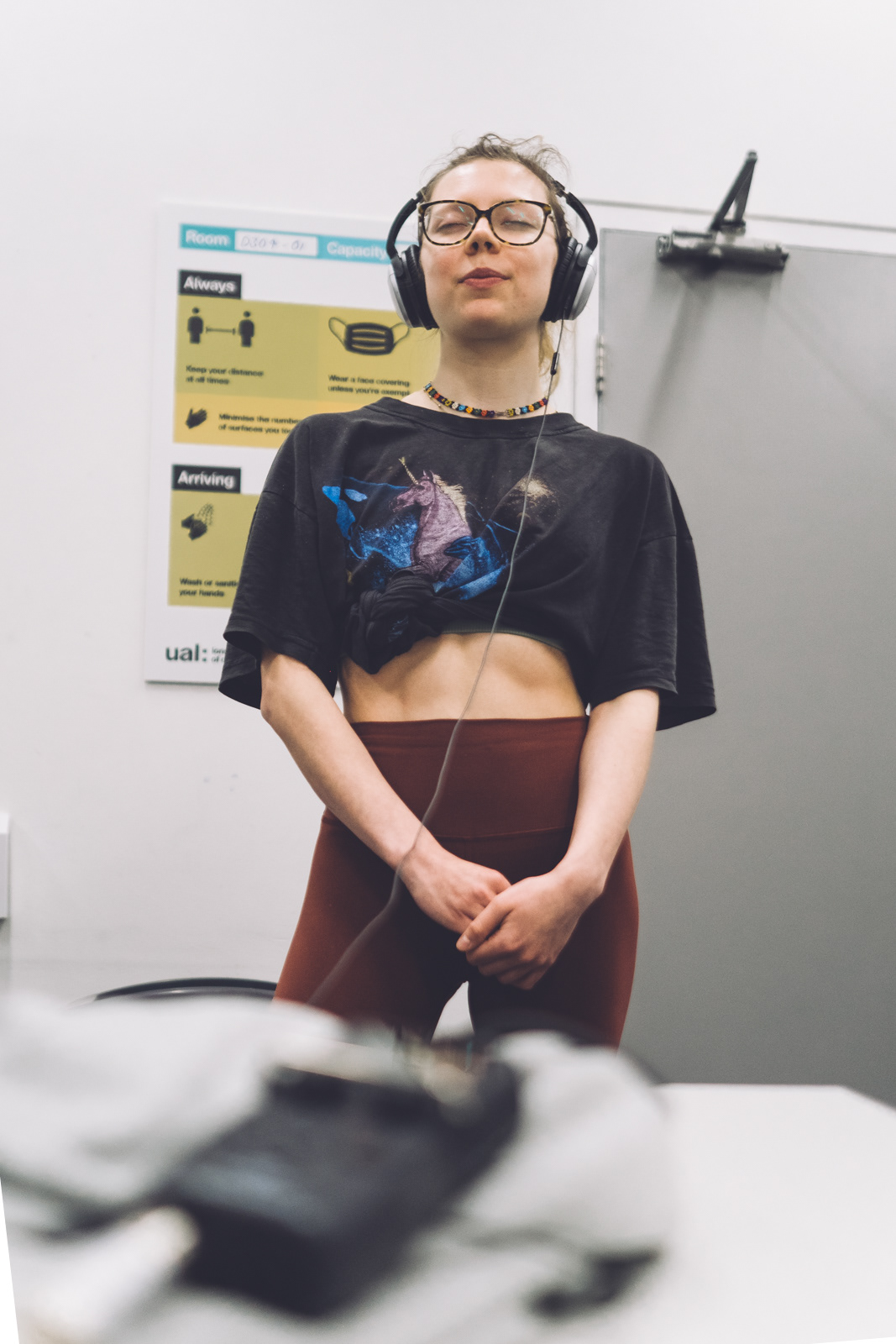
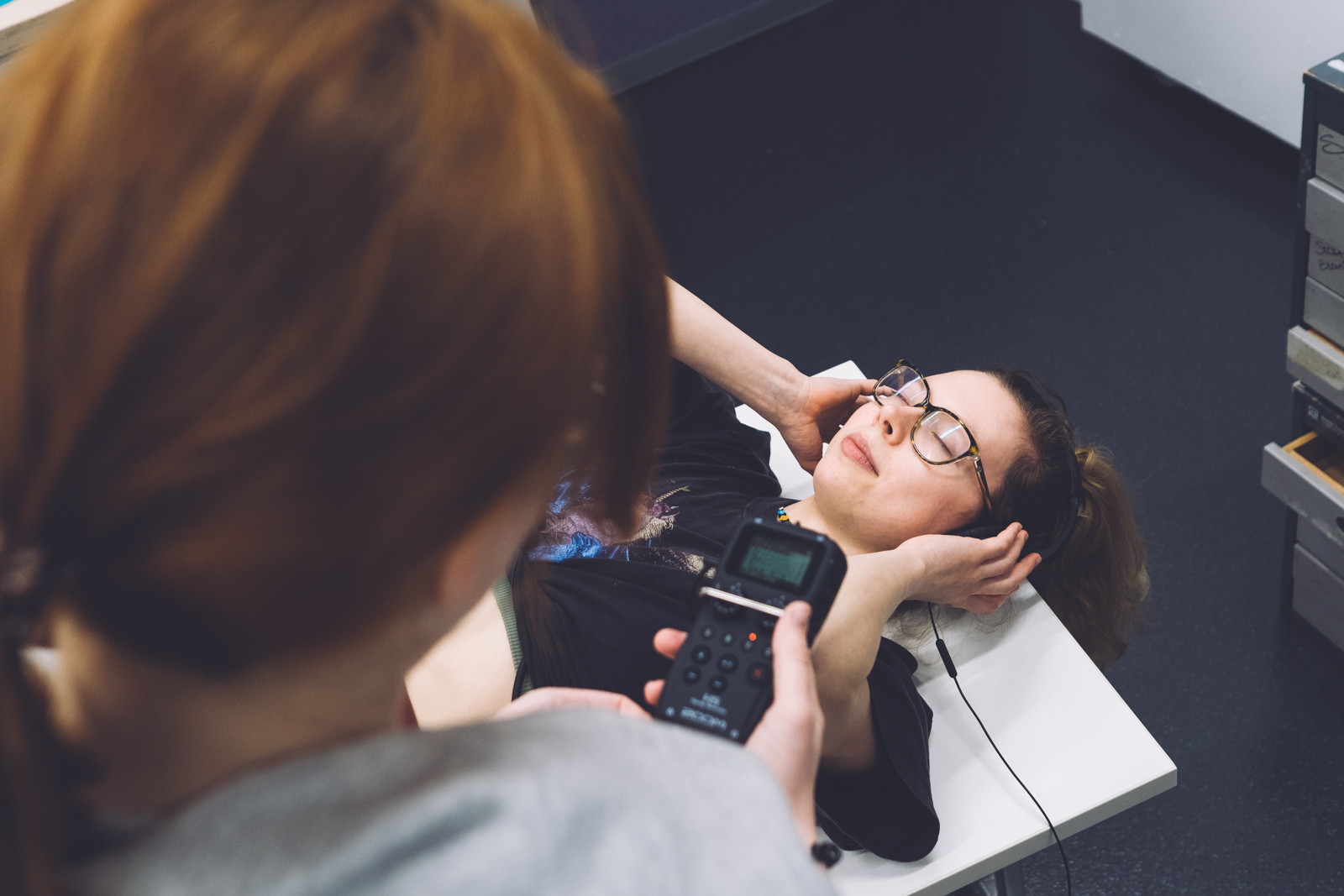
Testing and experimenting with a Zoom recorder and a contact microphone. Photos taken by Sebastian.
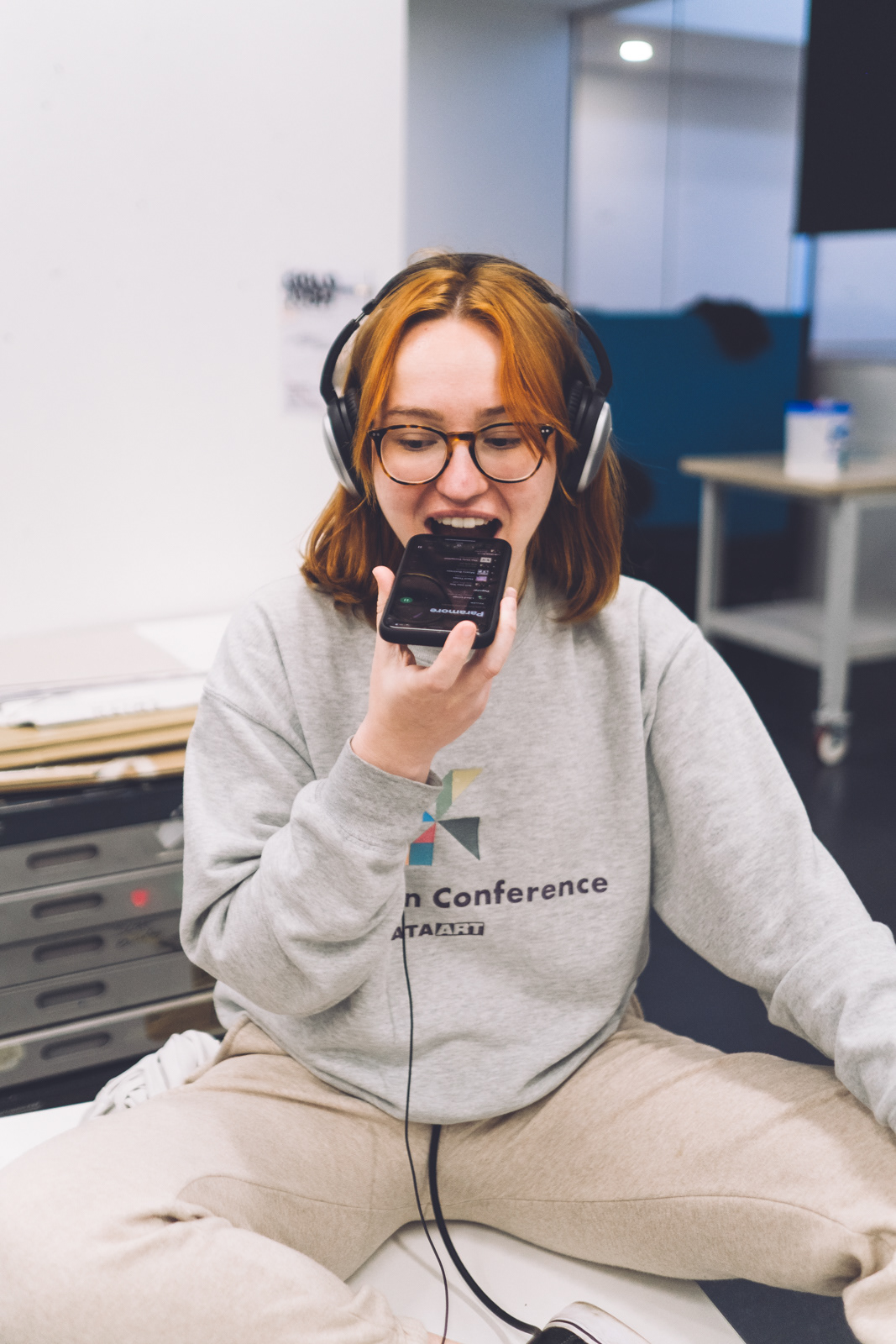
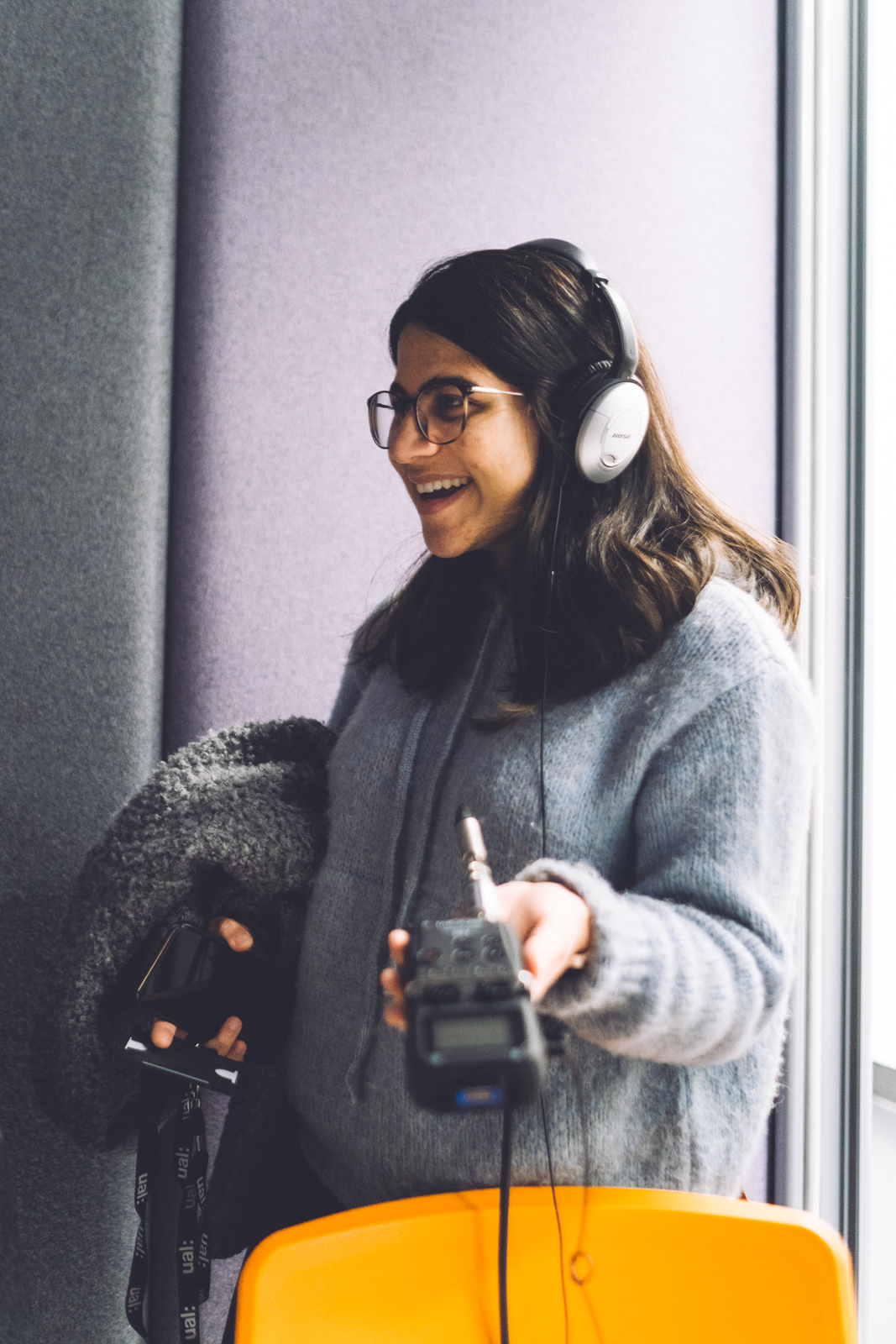
Testing and experimenting with a Zoom recorder and a contact microphone. Photos taken by Sebastian.
PREPARATIONS
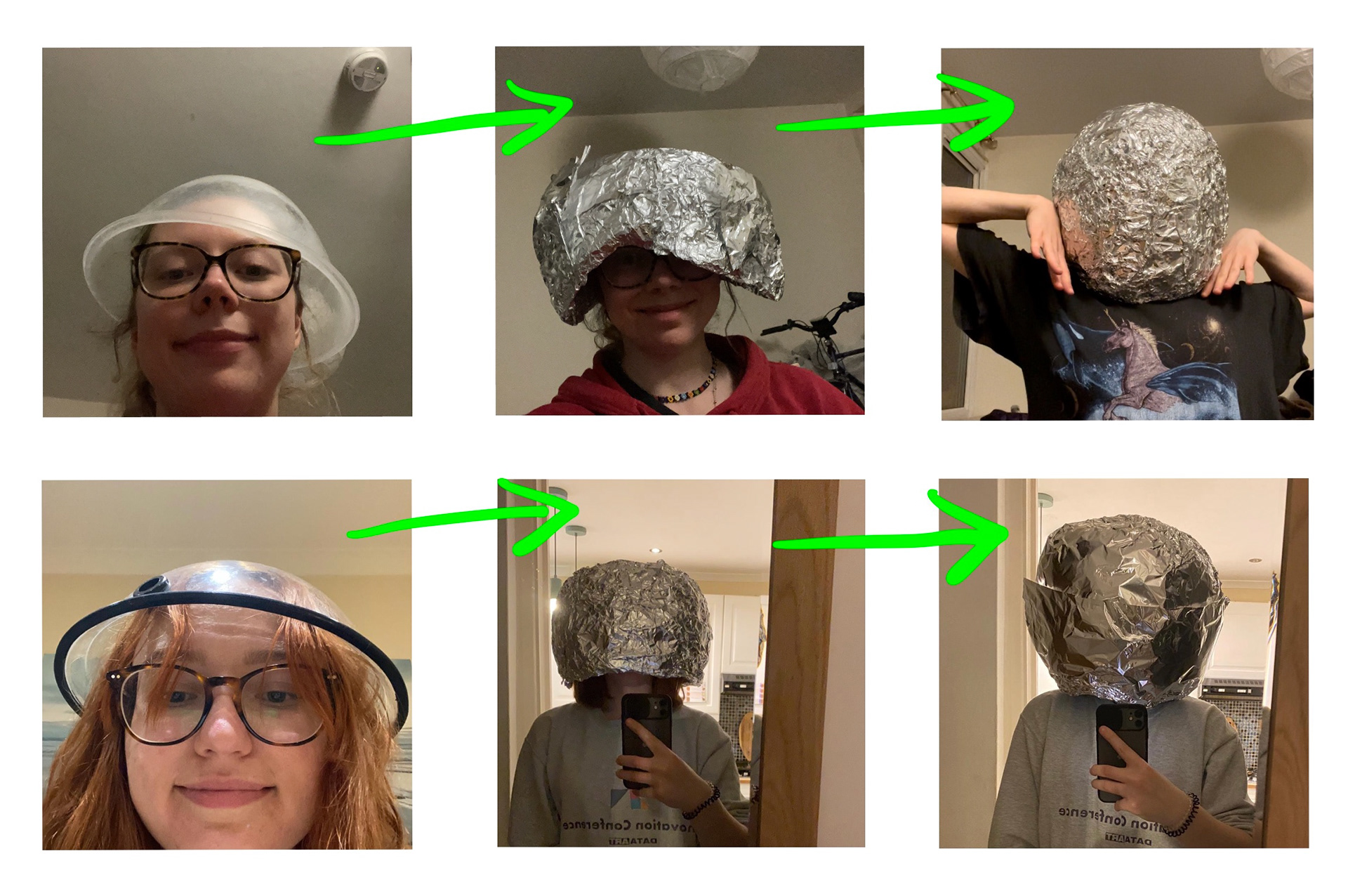
Creating the bubbles out of foil for our prototype: step by step guide. Pictures taken by Kate and Ula; Editing by Ula.
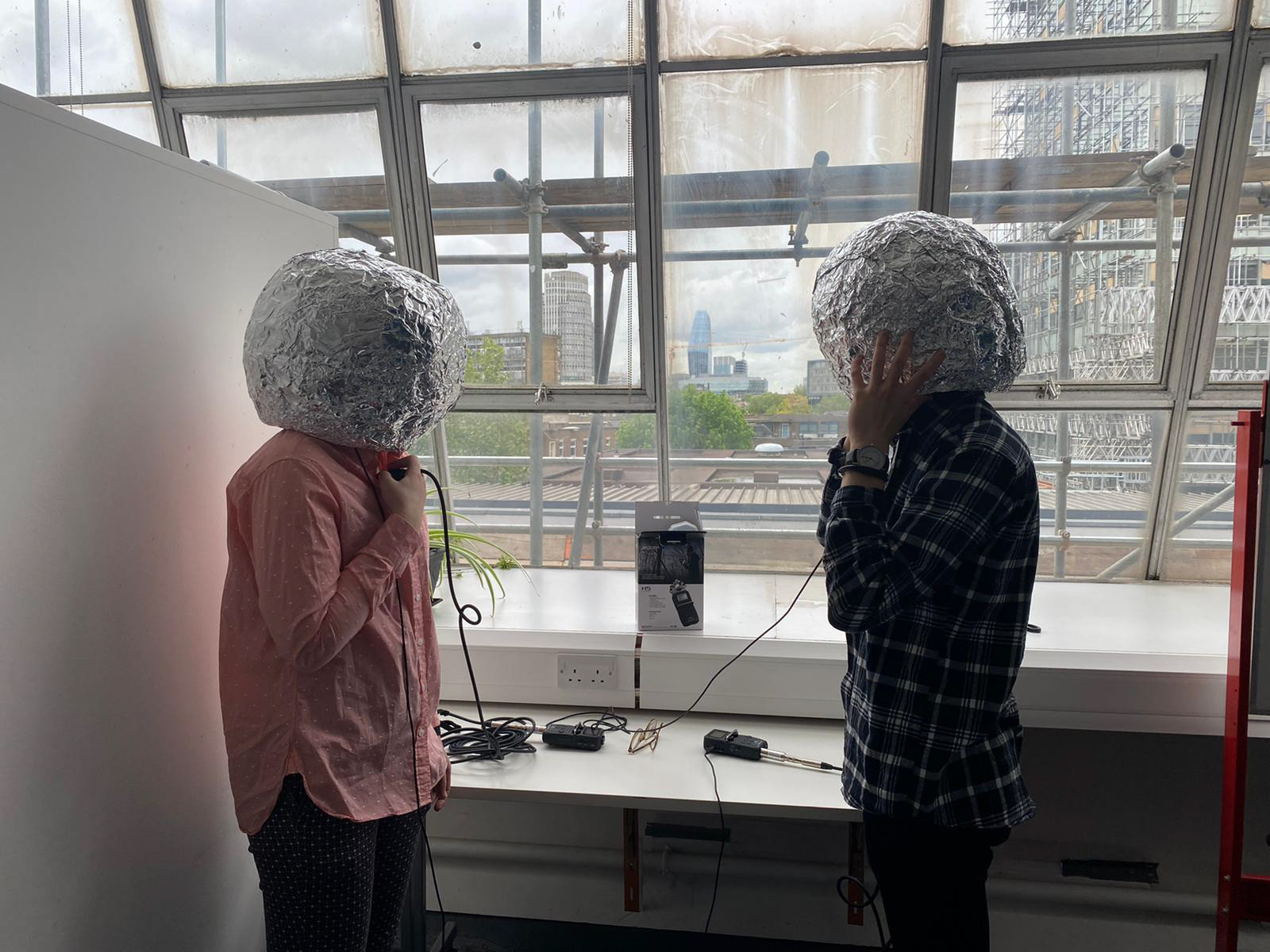
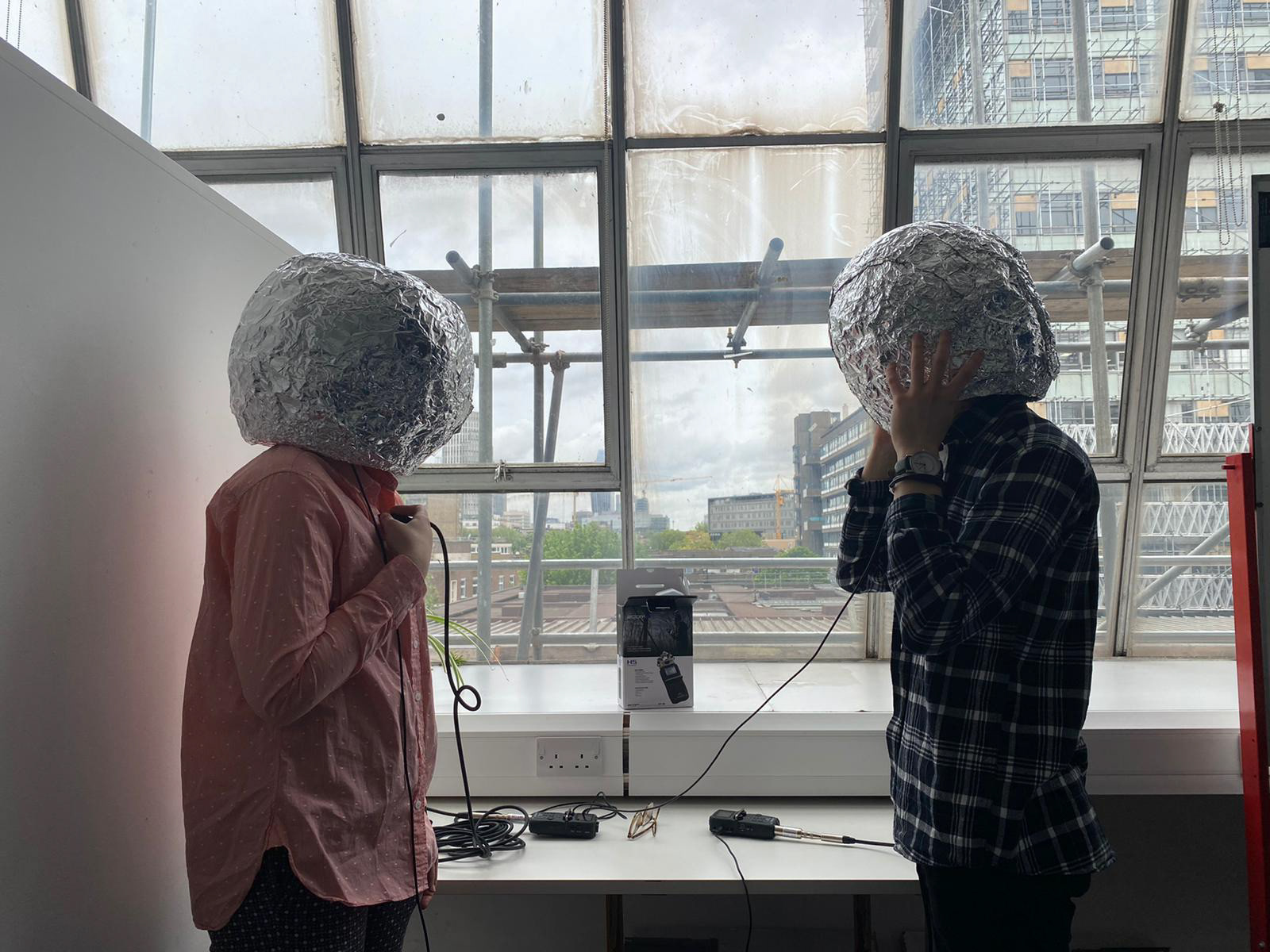
Testing our prototype before the presentation to make sure everything works perfectly. Photos taken by Ula.
PRESENTATION AND FEEDBACK

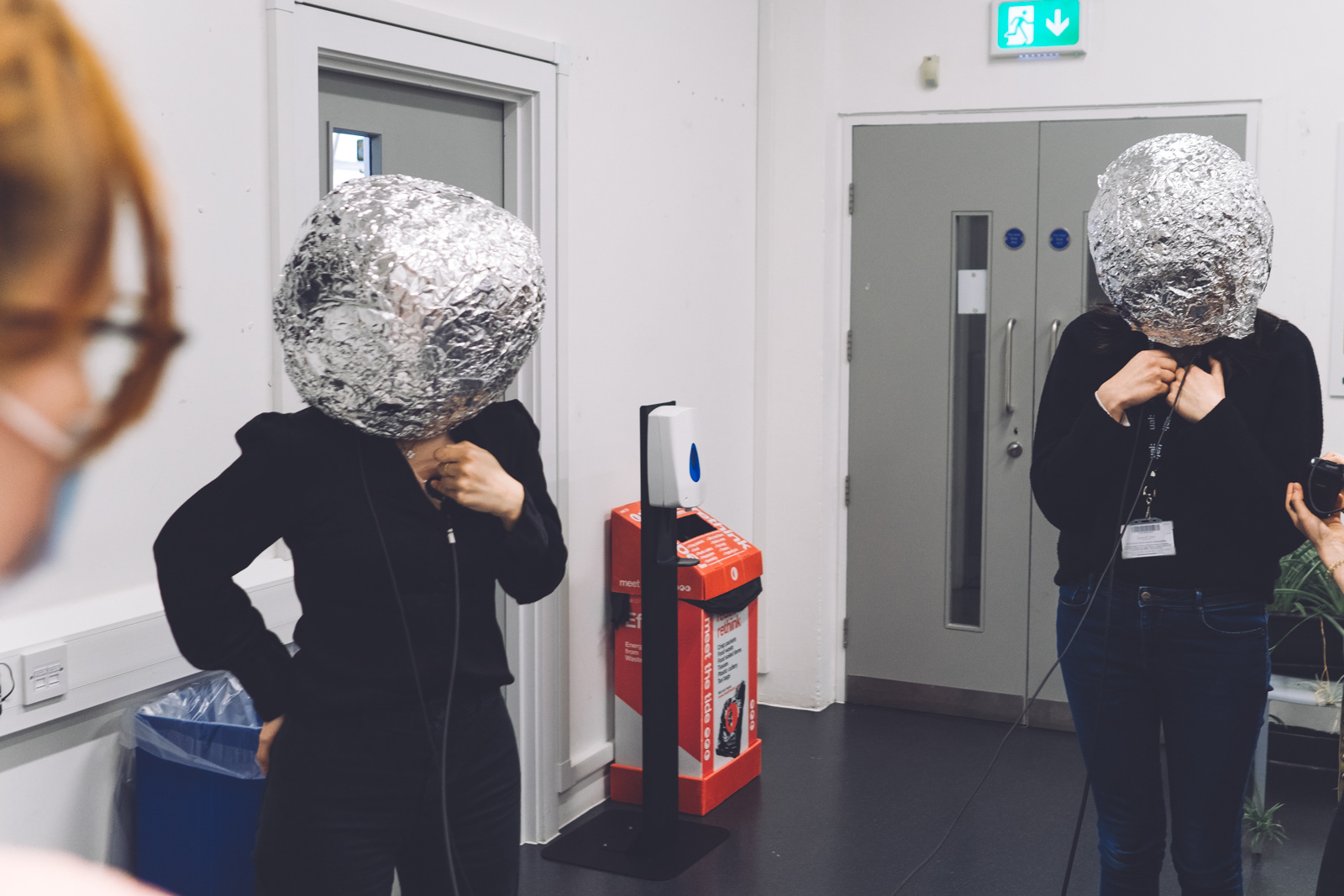
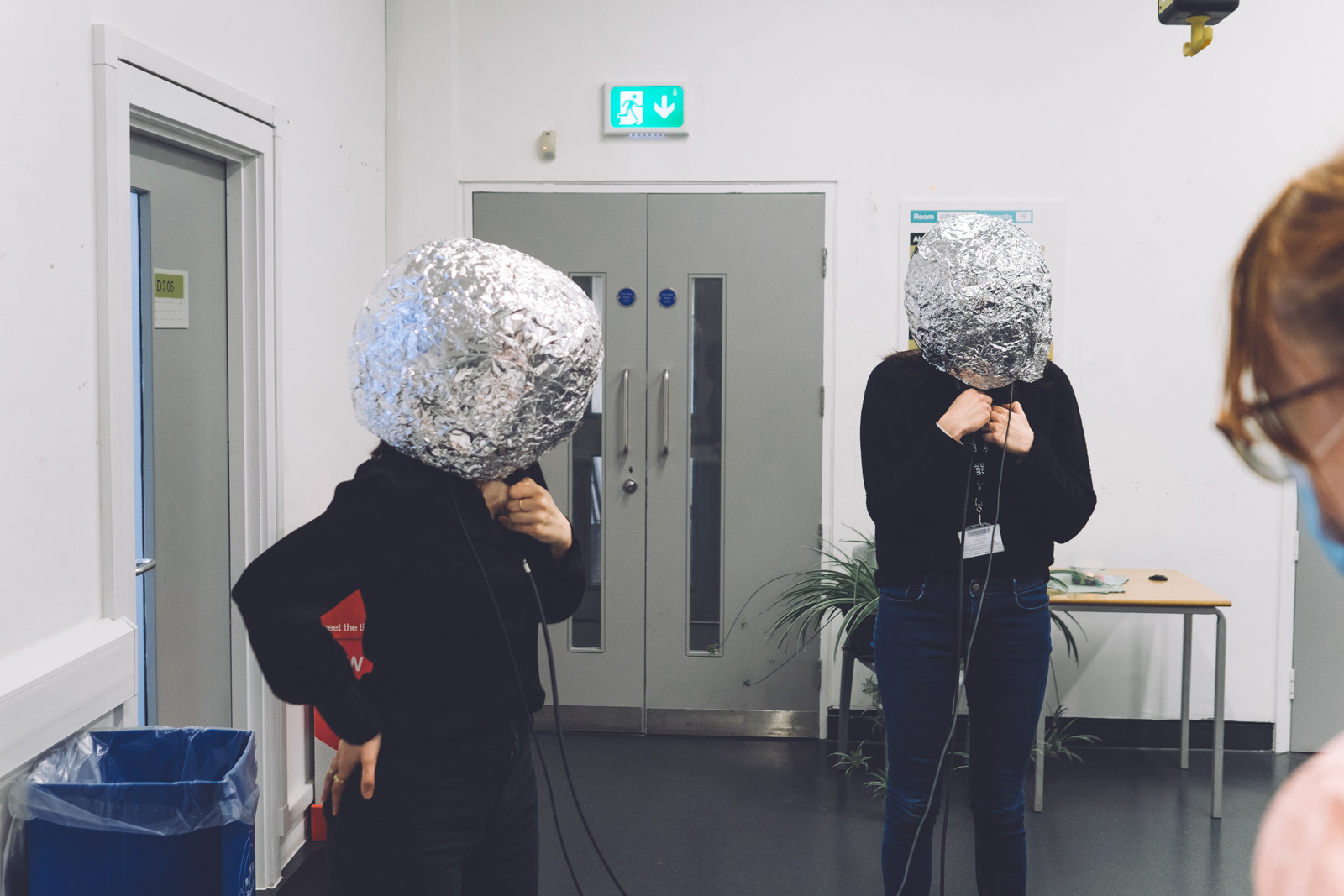
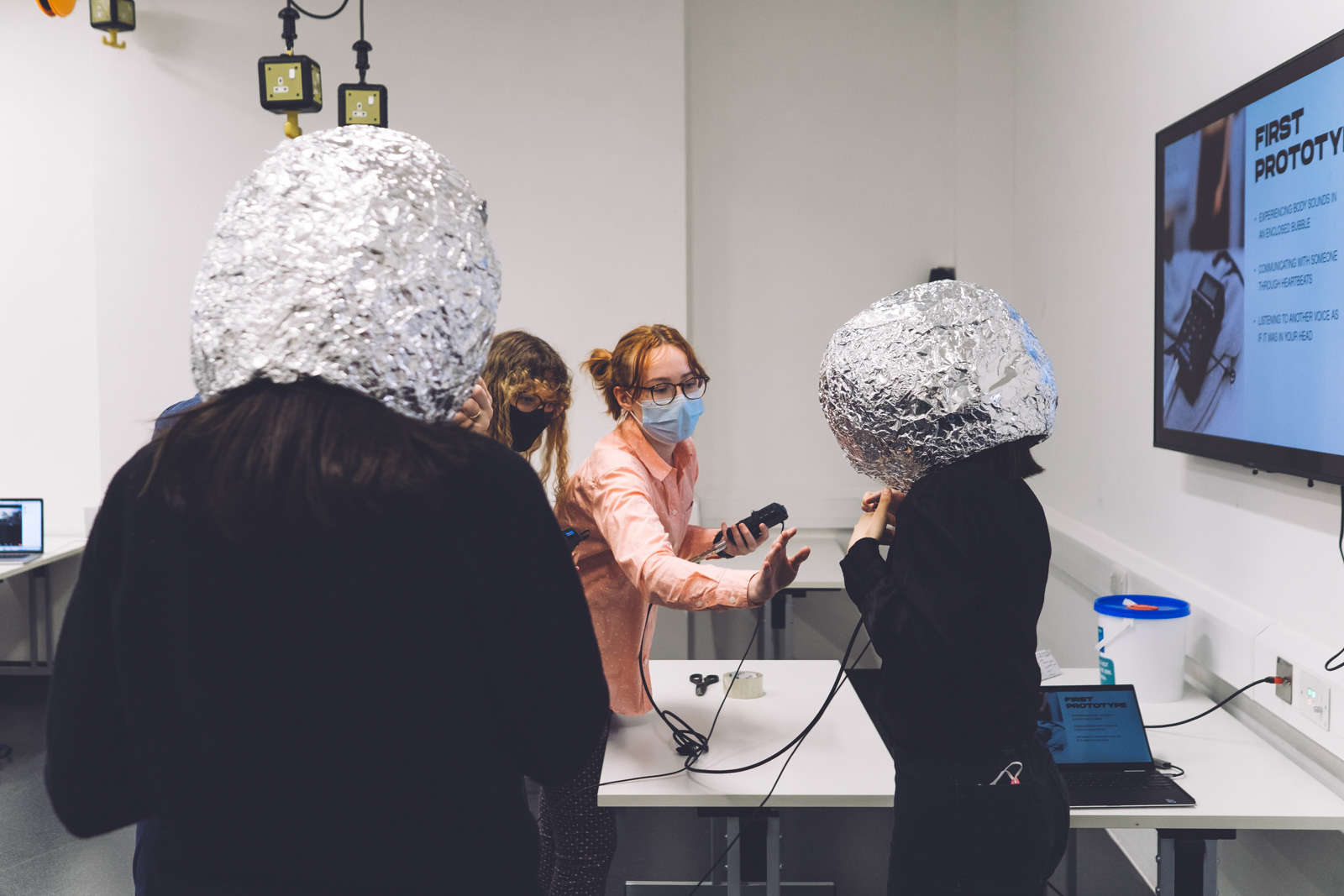

Our presentation went well and we were very proud to present our prototype. We thought we managed to achieve a very interesting feeling and experience which everyone encouraged us to explore further. However, there were some technical issues that people experienced during the experience which made it confusing. Furthermore, both Steph and John pointed out to us that although we created a thing, we didn't design an experience yet as it was lacking depth and justification. Another interesting piece of feedback that we received and decided to take further was that we managed to create a mysterious space between people, an atmosphere that you experience when talking with someone you love in the kitchen late at night or at a sleep over with a friend.
BIBLIOGRAPHY
Cervellin, G. and Lippi, G., 2011. From music-beat to heart-beat: a journey in the complex interactions between music, brain and heart. European journal of internal medicine, 22(4), pp.371–374.
Klein, E. (2020). Everything You Want to Know About Arrhythmia. [online] Healthline. Available at: https://www.healthline.com/health/arrhythmia [Accessed 18 Jun. 2021].
Lupton, E. and Lipps, A. eds., 2018. Sonic Branding. The senses: Design beyond vision. Chronicle Books, p.156.
Young, E. (2021). Super Senses: The Science of Your 32 Senses and How to Use Them. John Murray Press.